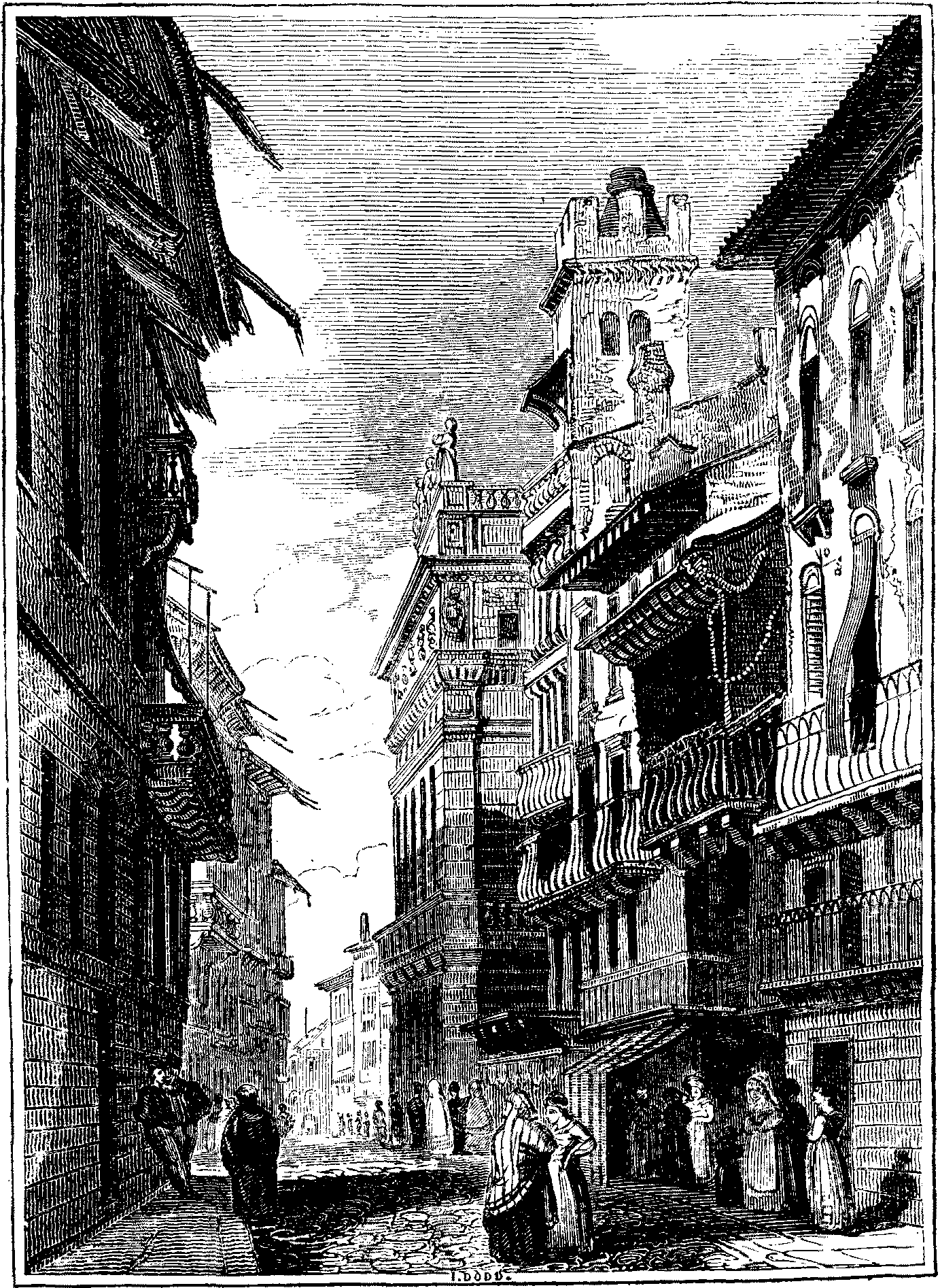THE MIRROR
OF
LITERATURE, AMUSEMENT, AND INSTRUCTION.
| Vol. XIV. No. 399.] | SUPPLEMENTARY NUMBER. | [PRICE 2d. |
Verona
SPIRIT OF THE ANNUALS FOR 1830.
Fair and gentle readers, we present you with a kaleidoscopic view ofsome of these elegant trifles—the very bijouterie of art andliterature—in picture outmastering each other in gems of ingenuity, andin print, exalting a thousand beautiful fancies into a halo of harmonyand happiness for the coming year. We call these "trifles," but in thebest sense of the term—ay, the air-plants of literature, whose lightflowers and fancies shoot up and entwine with our best affections, andeven lend a charm to the loveliest of their objects.
We commence with
The Gem,
almost the "youngling of the flock," which contains the original of theannexed Engraving, by W.J. Cooke,[pg 322] appended to which is the followingillustrative sketch:—
VERONA.
By Mrs. Maria Callcott.
The drawing from which our engraving is made, is one of the relics ofthe late Mr. Bonington, whose early death has caused such great and justregret to the lovers of painting. It represents one of those ancienttowers, and one of those magnificent palaces, (the Maffei Palace), whichdistinguish the city of Verona, and, by their peculiar character mark itboth as the ancient Gothic capital of northern Italy, and as one of thegreat principalities of the middle ages.
Verona is indebted to nature for part of the charms it possesses for atraveller. It is nearly surrounded by the broad and rapid Adige: thehills towards the Tyrol have a majestic character, which, as theyapproach the city, is softened by vineyards, and fields, and gardens,between agreeable villas or groves of cypress. The dress of the peopleis picturesque; their habits are cheerful, and their manners kindly.
Besides all this, there is scarcely a city, even in Italy, to which weattach a more romantic interest than to Verona. Under its ancient Gothicname of Bern, it is the scene of many of the Teutonic tales which arewoven into the Book of Heroes, and the song of the Nibelung. The poetsand novelists of the middle ages have also laid the scenes of many oftheir enchanting tales in this beautiful city; and our own Shakspearehas brought Verona so home to every English reader, that we feel almostto have a right of possession in the place.
Originally a city of the Rhetians, Verona became a Roman colony aboutthe time of Julius Caeser, who caused its inhabitants to be enrolledamong the number of Roman citizens. Its most flourishing periods underthe empire were the reigns of Vaspasian and of Hadrian, when varioustemples, and other public buildings, of which some fragments stillremain, were erected, and the magnificent ampitheatre, which is stillused for scenic representations, was built. It was under the reign ofTrajan, that Verona received its first Christian Bishop, Euprepius; andin that of Dioclesian, that its martyrs, Fermus and Rusticus, suffered.The conquest of the city by Constantine, and th
